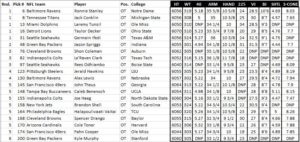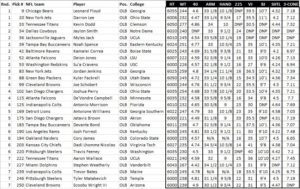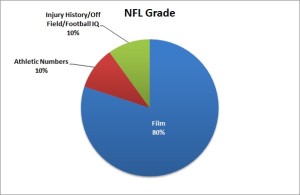
By Justin VanFulpen
In the past few years social media has exploded and more and more corporate America is reviewing candidates for jobs social media profiles and making hiring decisions based on what they find on someone’s Facebook, Twitter, Instagram, Snapchat, etc. This has now made its way to the NFL Draft process and it is something some NFL teams are taking to a scientific measurable level.
NFL teams are creating a “social media profile” on NFL draft prospects as well as their regular football profile that included football skills on film, medical and character. This social media profile is looking to see what the prospects are tweeting about, what they are posting, etc. Things that they are looking for is how much does the prospect post something about football? Are there posts about drugs, weapons, or alcohol? Does the prospect post things degrading women? Some NFL teams will use pie graphs to show the percentage of things that the prospect posts about.
How far are NFL teams going back to research? Well one NFL team that I talked to said that they looked all the way back at a tweet QB Jameis Winston had tweeted in high school. Yes, high school.
“Our job now as scouts is not just see if the guy can play but every aspect of his life and that now includes his social media and what he post, as what his post is most likely what is important to him as a person. We are now taking it to a level of measuring that.” said one NFL scout.
As we saw play out this past April draft with former Ole Miss and current Miami Dolphins OT Laremy Tunsil social media was hacked and a video and screen shot of texts were posted. Tunsil’s fall from the draft’s projected No. 3 pick to No. 13 cost him at least $10 million in guaranteed signing bonuses. True Tunsil’s social media profiles we hacked by what was believed someone who Tunsil had given access to his profiles in the past.
With this social media analytics and data what NFL teams are trying to find out is, one does the prospect love football and two is he a good guy and can we trust him. Everyone need to know what they post on social media could be viewed differently by different people. True what someone post on social media doesn’t give the full picture but it is a tool that NFL teams are trying to use to make better personal decisions.
Social media can be used for positives things like building one’s brand, marketing, engaging with fans, supporting causes and much more but it can have a negative effect as well and once something is posted it can’t be taken back even if deleted because with the notoriety someone will screen shot it and it will live on.





















